|
| |
Pablo Lorenzo-Eiroa
Gaudi’s NYC Skyscraper: Inhabiting the city skyline,
2024
Robotic Incremental Metal Forming Installation
Arts in the Park Program, NYC Parks
May 18th 2024 – May
19rd 2024
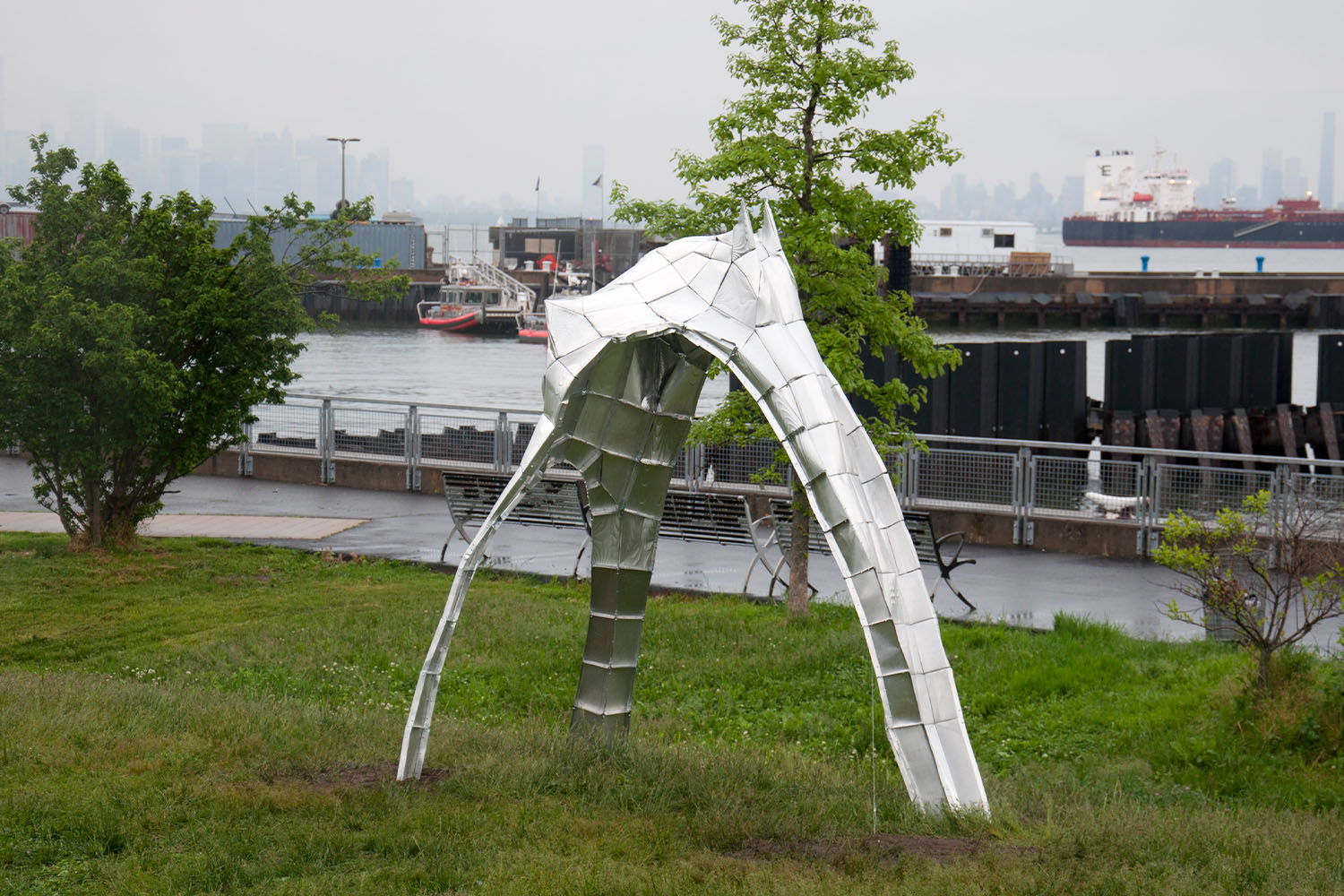
New York, New
York, May 19th 2024 – #Art in the Parks Program: Pablo
Lorenzo-Eiroa’s research on robotic metal forming was
developed as an ultra-thin shell structure installation
implementing Big Data, Simulation and AI including along the
process a group of research students. The installation was
inaugurated this Saturday May 18-19th 2024 in parallel to
NYC Design Week and as part of the Art in the Parks Program.
Gaudi’s (1852-1926) 1908 skyscraper for NYC is reinterpreted
as a prototype based on concatenated structural catenaries
actualized as signal feedback simulation/optimization across
generations conforming an Artificial Neural Network. Gaudi’s
catenaries are a form of evidence based analog design
simulation in which a catenary of gravitational forces is
inverted to design a structural form finding process. New
York City can be defined as an ideal city in search for
vertical infinity. Several buildings like the Chrysler
building define such ideal in different forms, from aluminum
reflective multiple generations of crowns and spires
accentuating the vertical perspectival illusion. The
installation expands critically the ideal search for
vertical infinity that defines New York City’s urban project
of the fields of skyscrapers in Jersey City, Manhattan and
Brooklyn viewed from the Stapleton Waterfront Park.
Sometimes people may wonder what it would be to live in a
building’s crown, cupula, or spire. Critiquing the
utilitarian aspect of skyscrapers as real estate
optimization and the social segregation of vertical class
stratification, the installation proposes an ideal different
skyscraper structural typology as a functionally voided
structure-space-envelope, making the skyline buildings top
inhabitable, reachable and experiential displacing it into a
social and visual art piece being able to inhabit a building
crowning, cupula, dome or in this case a catenary-based dome
like structure. The installation also proposes a different
structural prototype for a skyscraper based on Gaudi’s
explorations that can implement catenaries to optimize a
construction system based on catenary slabs. The skyscraper
is redefined by a catenary vertical curvature unreachable
infinity.
The installation reinterprets Gaudi’s skyscraper project for
NYC through survey and analysis of his work, including
simulation of catenaries and concatenated catenaries
activating problems of simulation of simulation including
signal feedback aiming at activating an Artificial Neural
Network. The installation develops a critical analysis of
Gaudi’s work: comparing survey evidence in his built Sagrada
Familia in Barcelona in relation to evidence-based computer
structural simulations and AI simulation predictions. The
project integrates mathematics, physics, and AI (data +
model). It integrates Machine Learning repository training,
Generative AI DM and 2D to 3D estimation and prediction as
well as AI features. These features also index the signal of
their robotic construction system. In addition, a virtual
catenary is present but not built and tensions structural
stress adding inertia to the structural performance of the
installation proposing a set of infinite generations of
concatenated catenaries accentuating a perspectival vertical
growth. The installation includes machine vision direct
signal survey, indexed signals from a 3D scanning of Gaudi’s
Sagrada Familia 3D photogrammetry and generative AI. These
various methods applying multiple definitions of AI are
integrated into a form of anaesthetics both researching
latent problems in Gaudi’s work, developing a data
repository and training, and opening them up into an
expanded set of possible futures, aiming at critiquing
current issues of authorship and biases raised by the
current Big Tech’s Digital Feudalism.
The installation proposes a simple three support system
canopy that spans 8’ in length by 6’ wide and 12’ height
through a thin shell structure-envelope. The installation
activates a thin shell structural typology but also its
tiling subdivision increases the structural inertia of the
thin shell surface through origami folding. The installation
is based on a non-standard customized robotic incremental
metal forming technique which actualizes catenary forces
through the robotic movement and forces pairing
computational signs and computational simulation signals
into actual fabrication robotic physical signals. The
robotic signals activate a structural reality expanding and
critiquing the digital computational design process making
it real performative. The material is 100% recycled aluminum
alloy of 0.022” thickness, making the thin shell structure
extremely thin and efficient as well as a high-technology
performance structure due to the capacity given by the
incremental forming. The incremental forming activates a
type of site-based computation in which each signal
activates the context for the following signal creating the
catenaries. The tiles increase the lower dimensional mesh
subdivision that optimizes a stress diagram into a double
curvature higher dimensional panel. The fabricated tiles
activate catenaries at various scales from conforming larger
catenaries increasing the double curvature dimension of the
installation to individual tiles curvature deviating from
the main structure to add inertia, to crease folds, to
buckling including at the detail level which are visual
features that have structural capacity.
For more information and details about the research please
refer to the book: Lorenzo-Eiroa, Pablo “Digital Signifiers
in an Architecture of Information: From Big Data and
Simulation to Artificial Intelligence”, Routledge, London
2023.
The installation which was possible thanks to the Art in the
Park program by NYC Parks was installed in Stapleton
Waterfront Park this past weekend May 18th-19th in Staten
Island looking to the skylines of Jersey City, Downtown NYC
Manhattan, downtown Brooklyn and Verrazano Bridge.
#ArtintheParks
Gaudi (1852-1926) 1908 skyscraper for NYC is reinterpreted
as a prototype based on structural concatenated catenaries
actualized as signal feedback simulation/optimization across
generations conforming an Artificial Neural Network.
Credits:
Pablo Lorenzo-Eiroa (artist, PI, copyright, photos);
Mike Saad (RA); Yashraj Chauhan, Arefin Chisty, Selin Dastan,
Jacob Sam; Meraj Nasir, Karan Patel, Alejandro Romero,
Amisha Bavadiya, Jahan Selim, (RS) MS ACT Program SoAD NYIT.
Sponsored by NYIT ISRC
NYC Parks Senior Public Art Coordinator: Elizabeth Masella
Acknowledgements for the OSPAR team, Vice Provost for
Research Jared Littman, Senior Grants Manager and IRB
Administrator Eileen Gazzola; Dean of the School of
Architecture and Design Maria Perbellini and the Fab Lab
team at the SoAD at the New York Institute of Technology for
the support provided.
The installation as an empty
skyscraper envelope measuring NYC skyline through its void
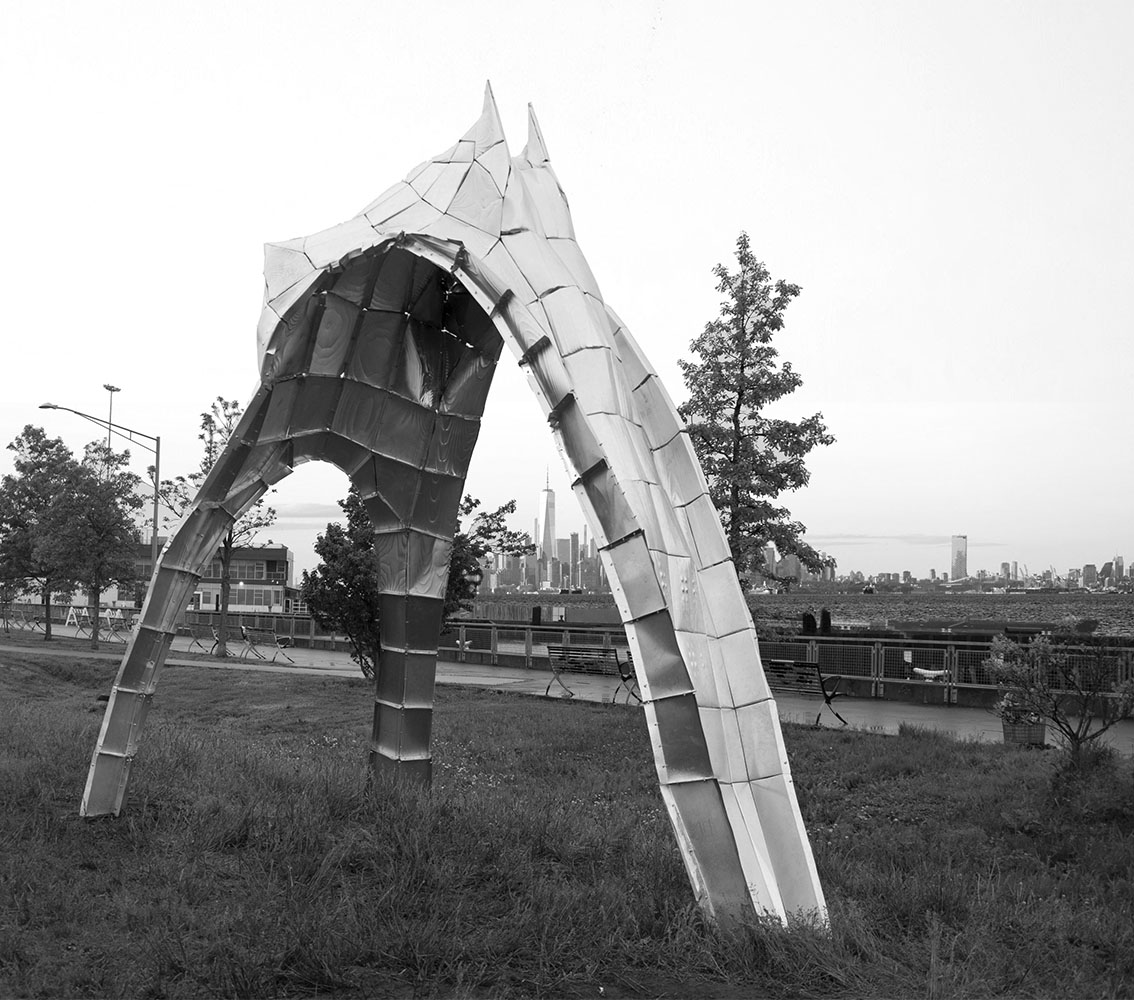 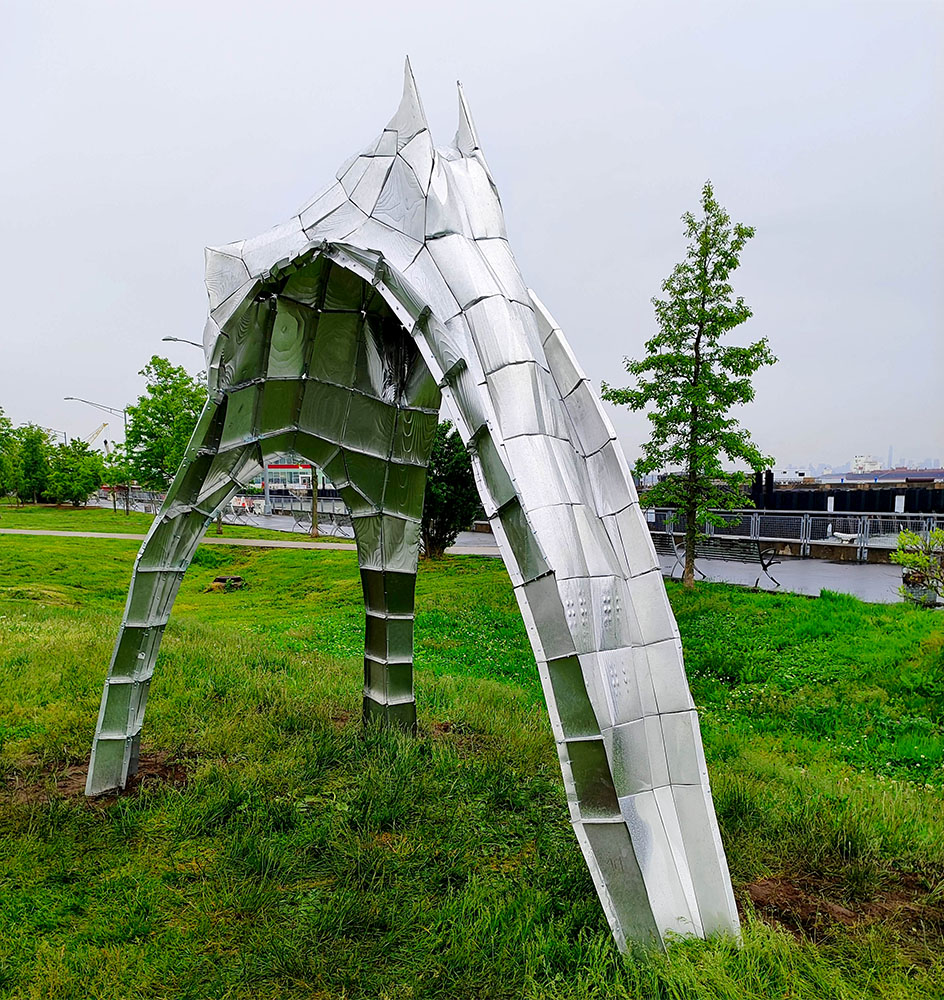 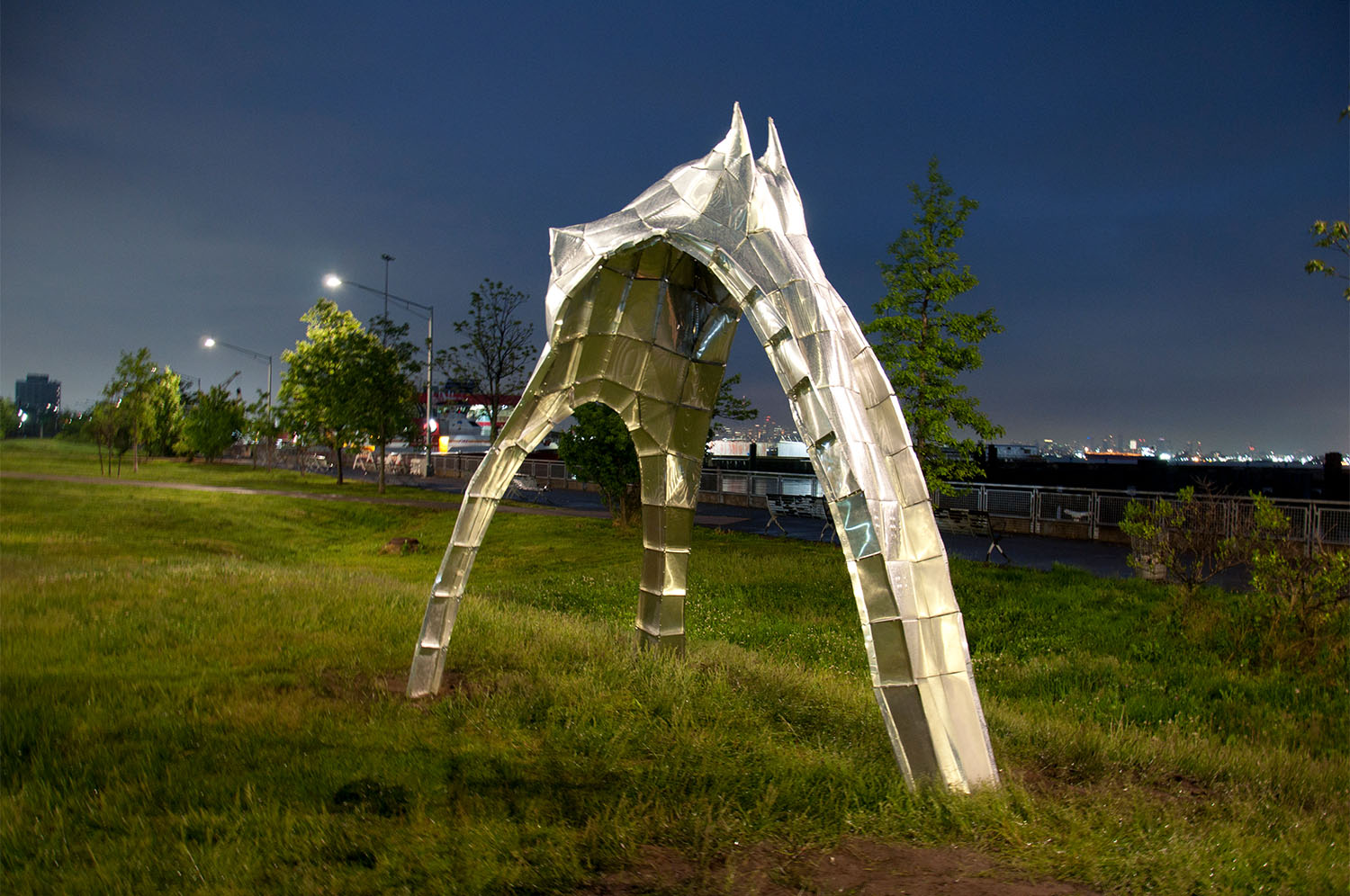
Measuring NYC skyline spires,
crownings from Stapleton Waterfront Park
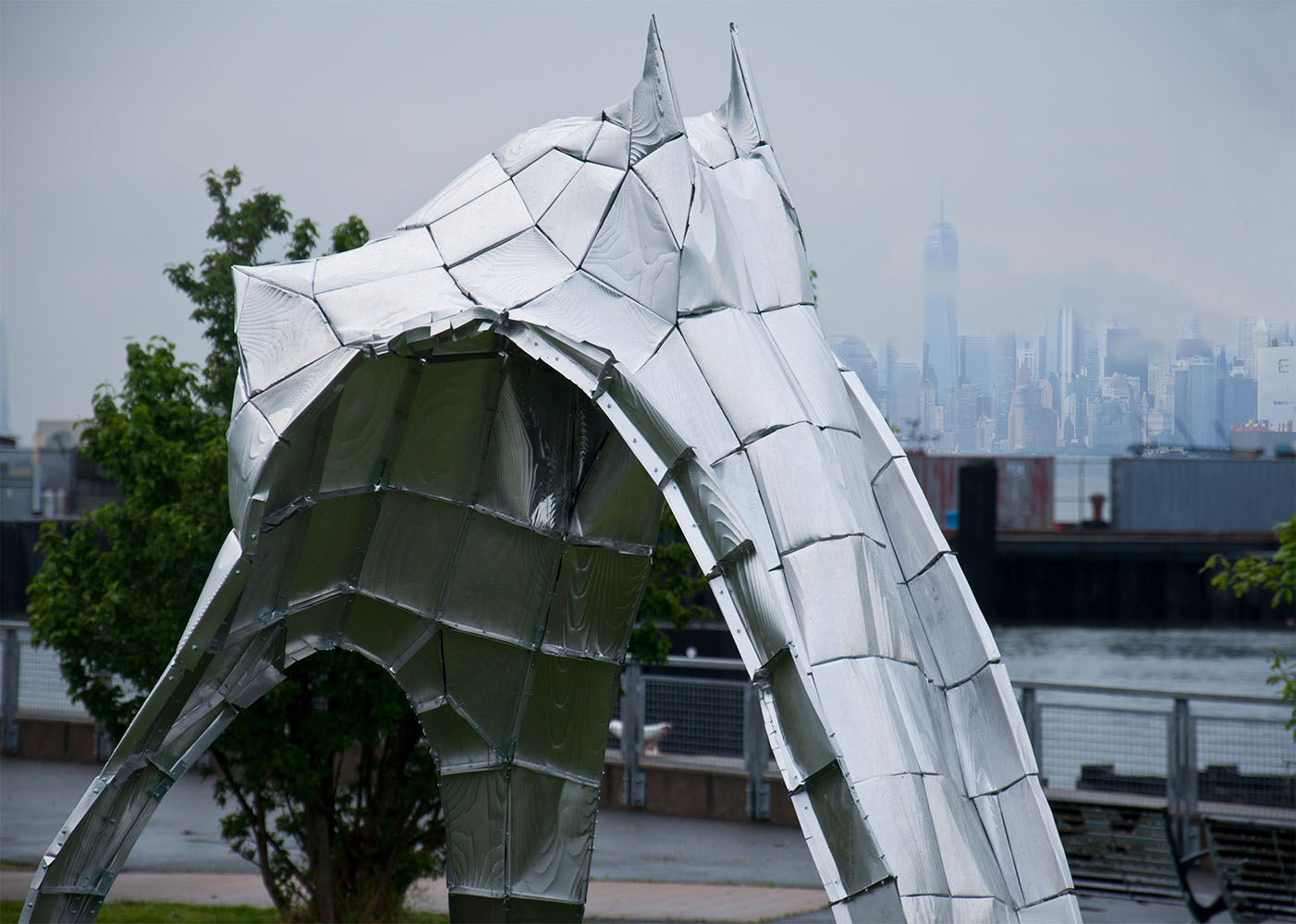 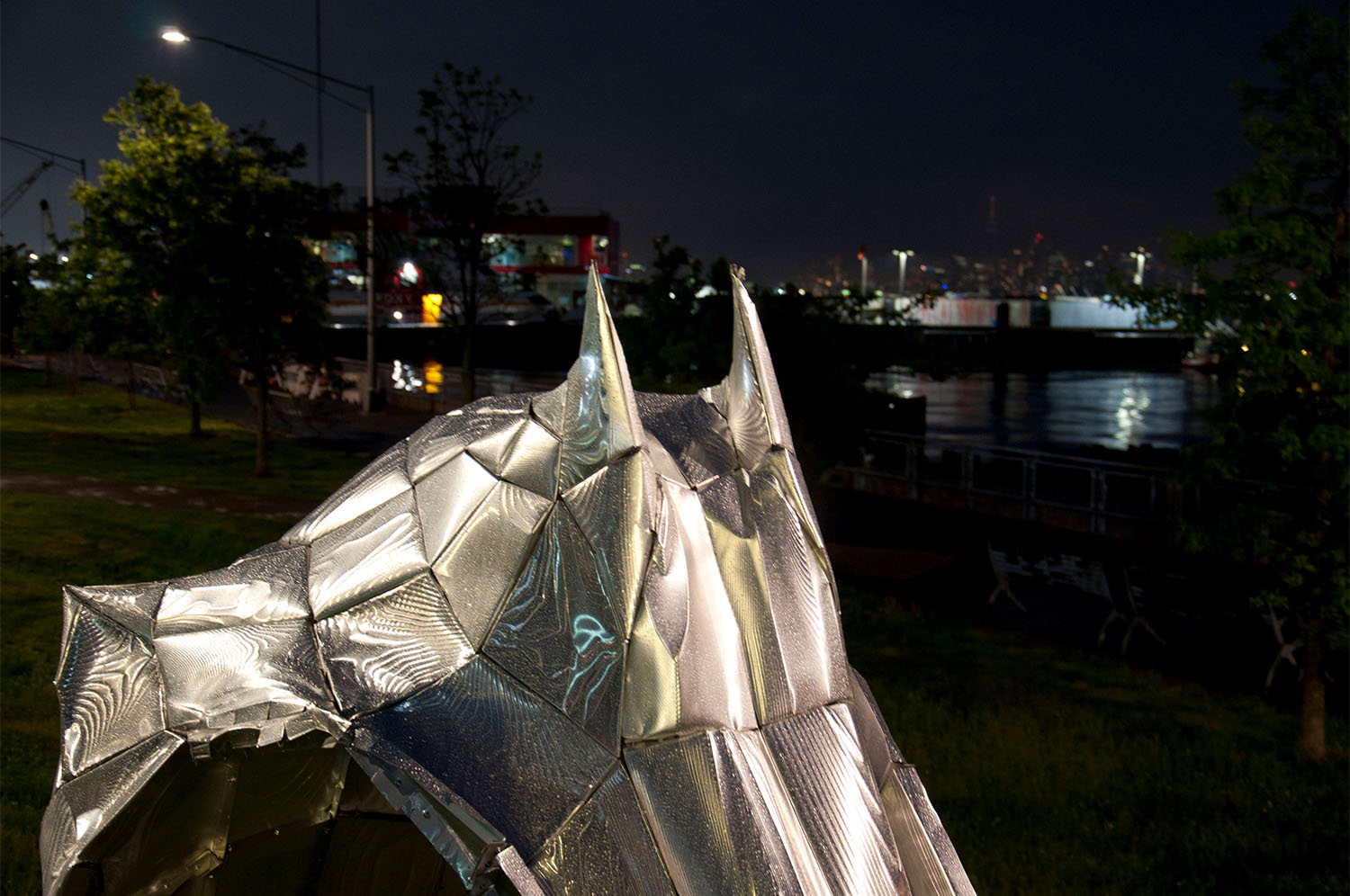 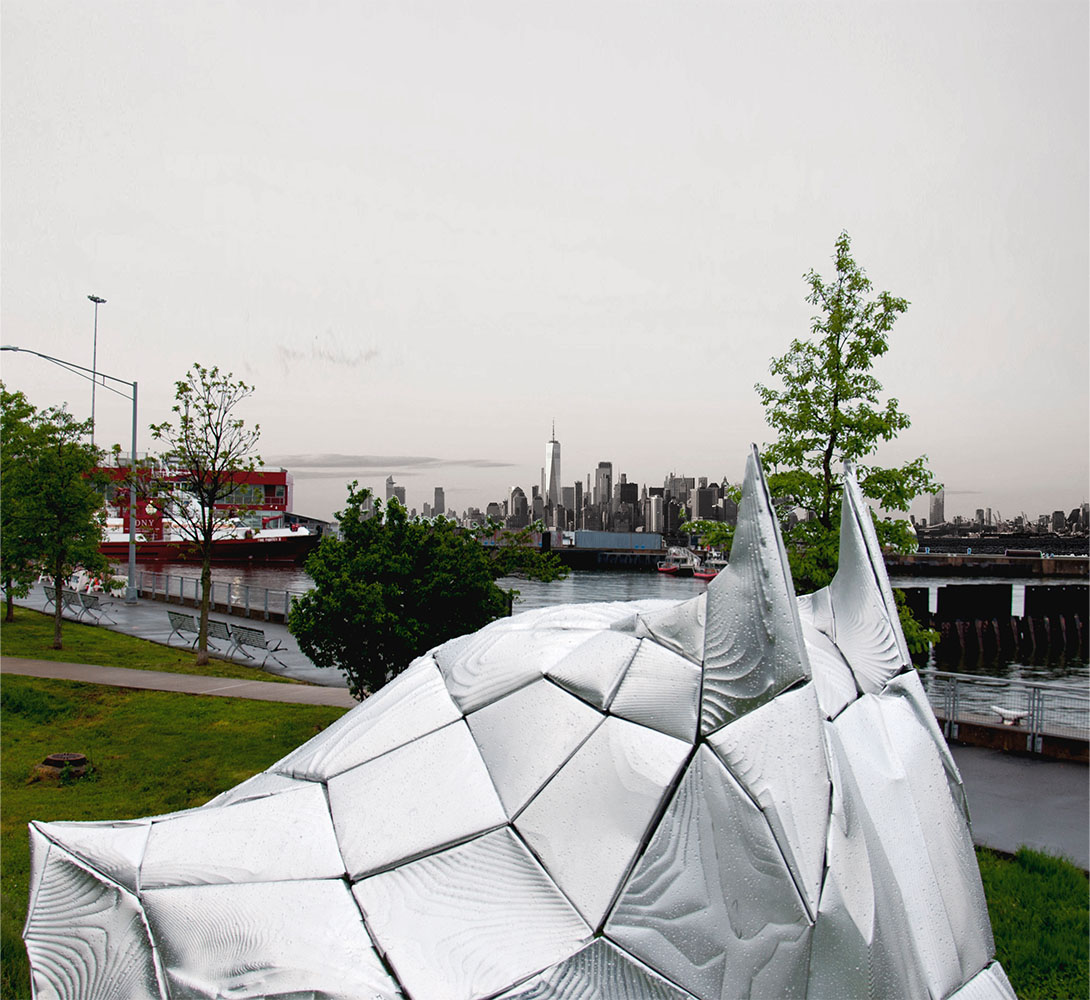
The installation ichnography
measuring NYC skyline domes, cupulas, crownings, spires
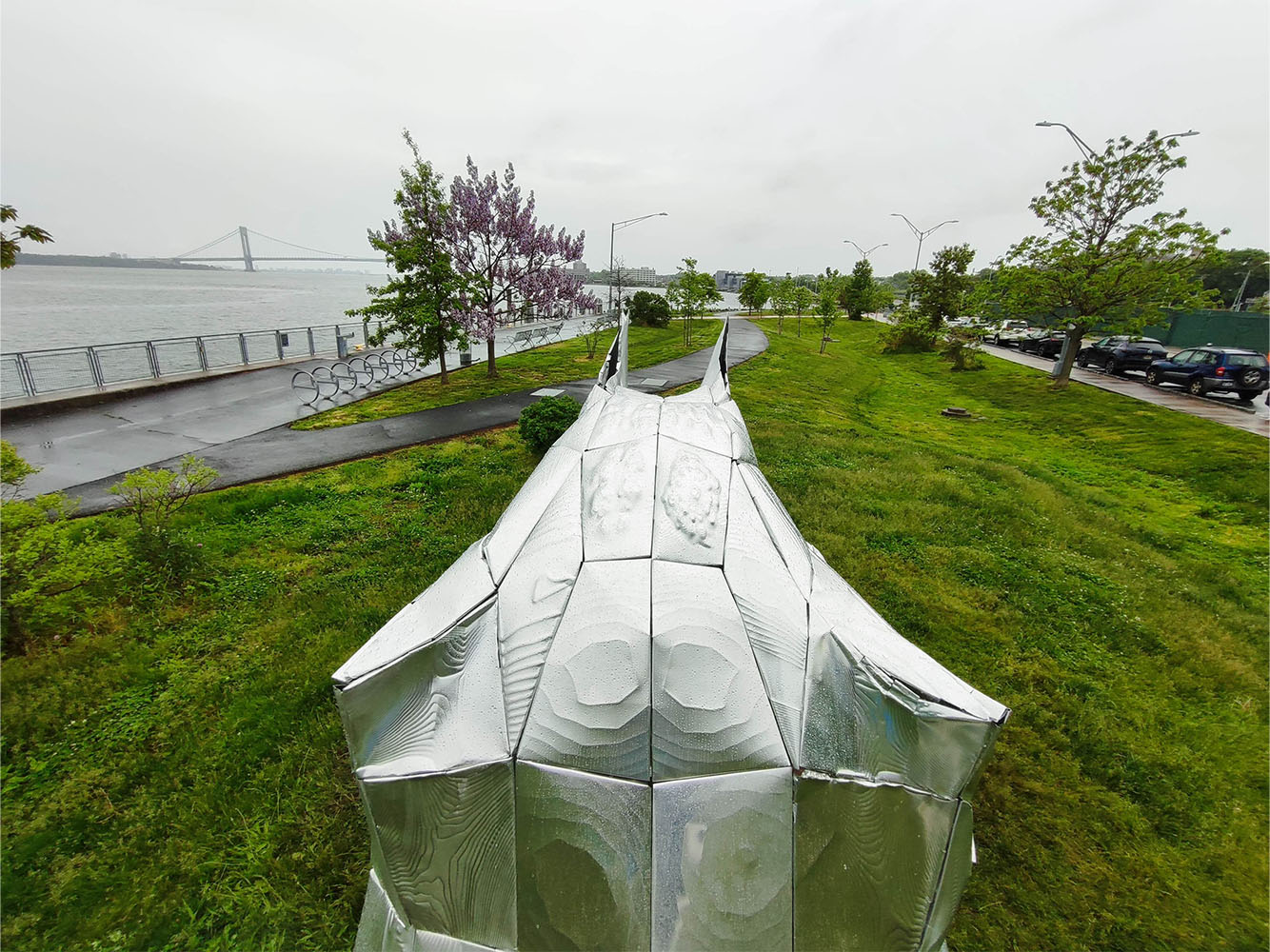 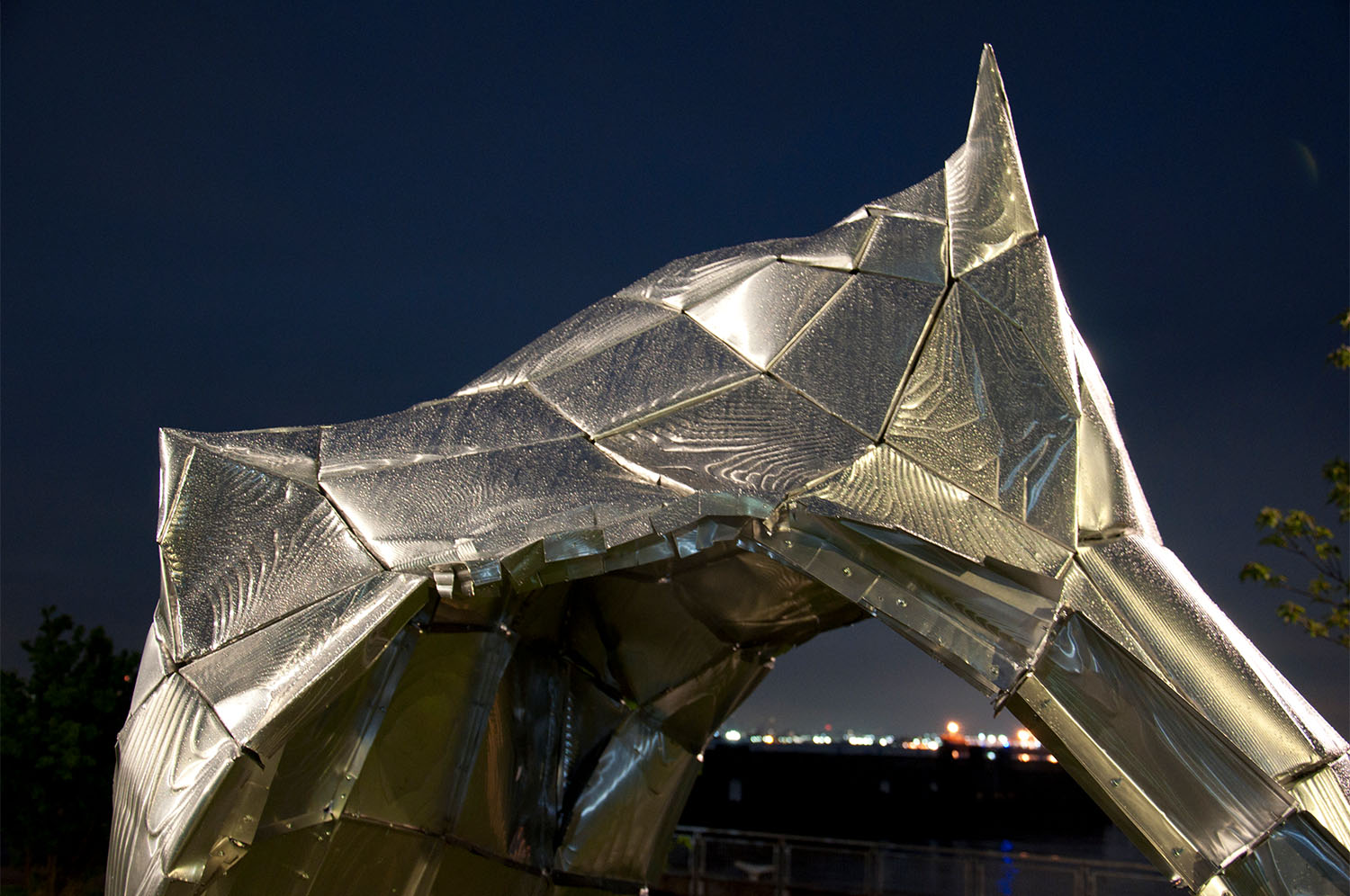 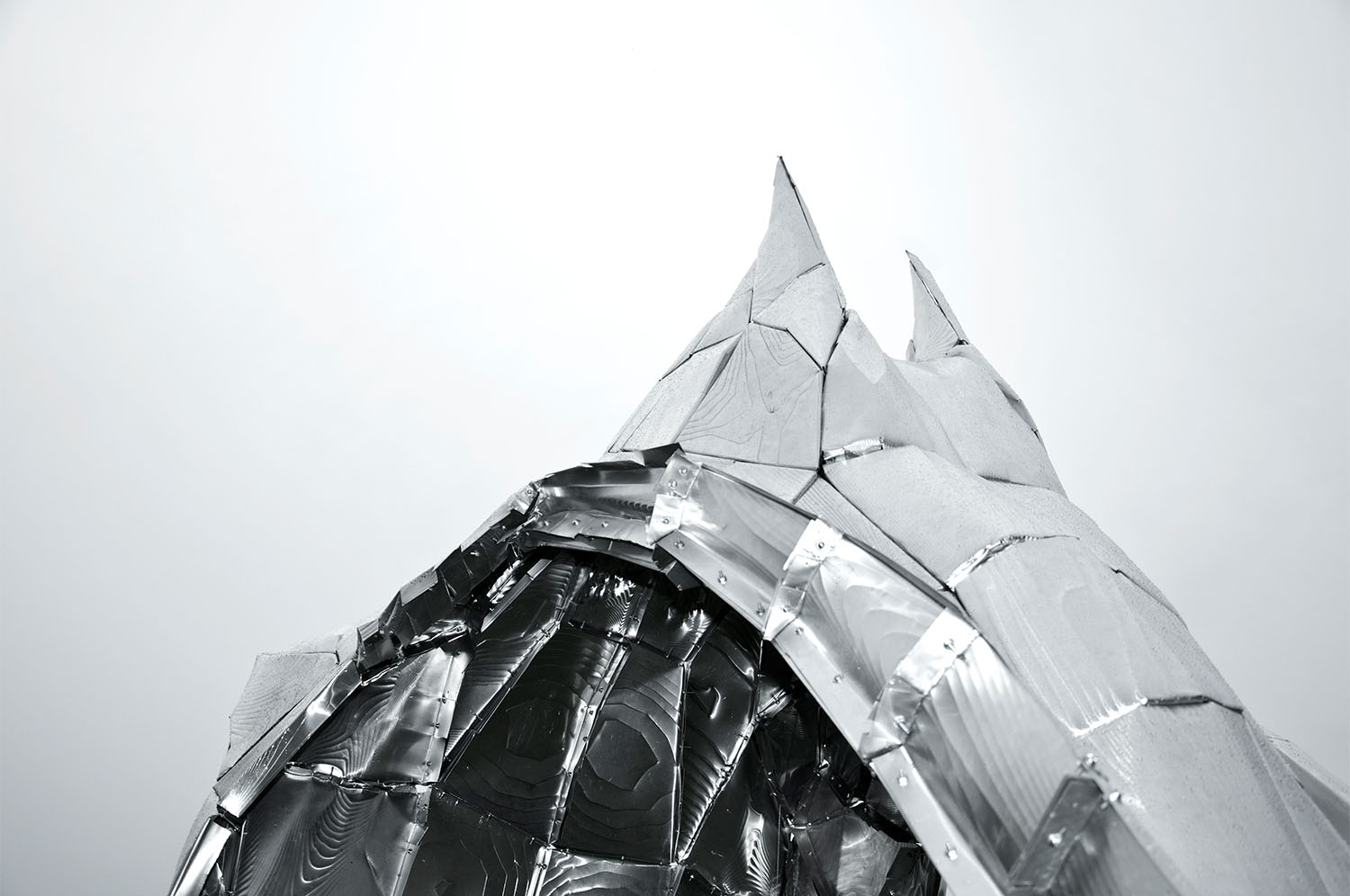
Inhabiting NYC skyline through
"Lobotomy" interior dome
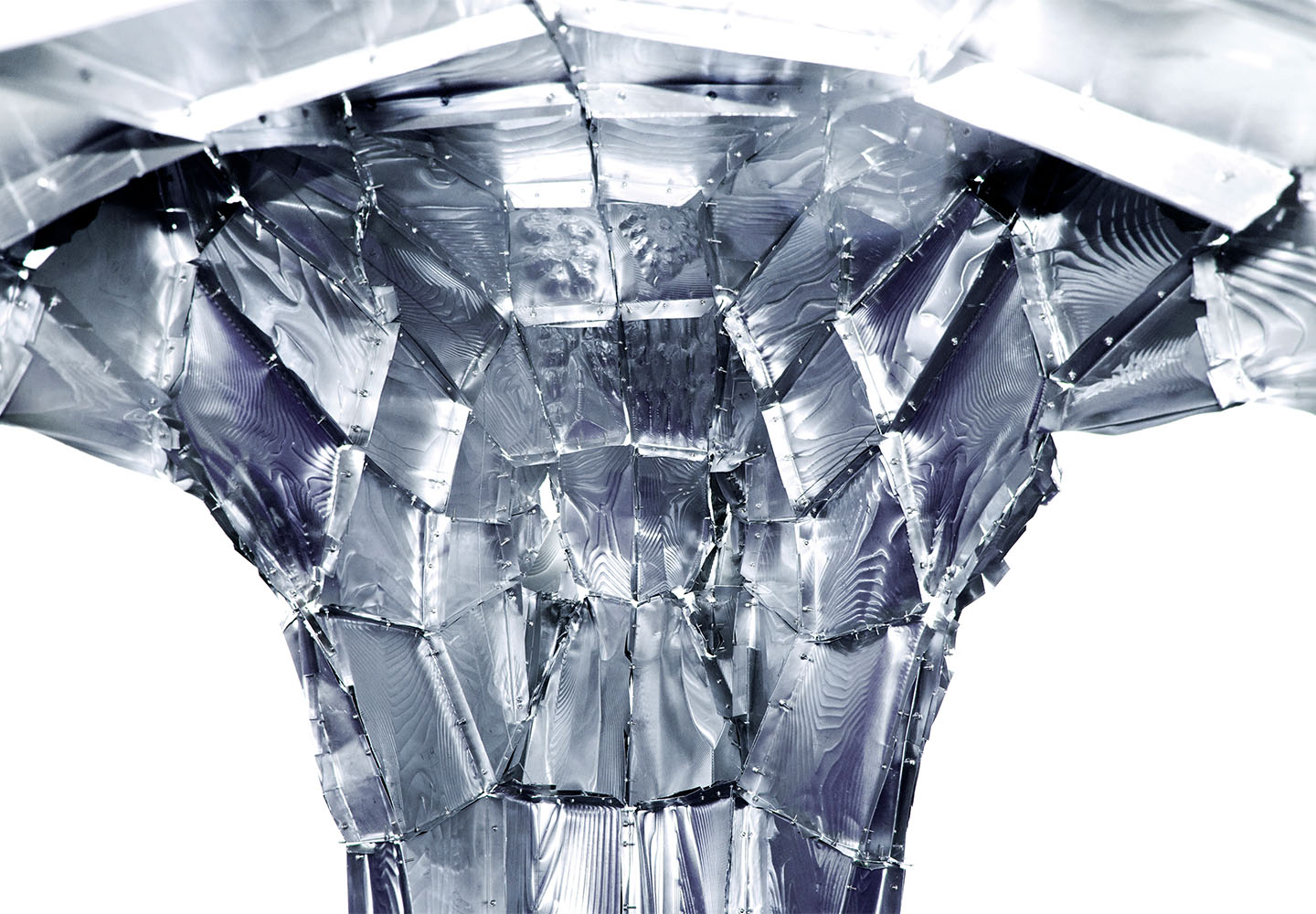 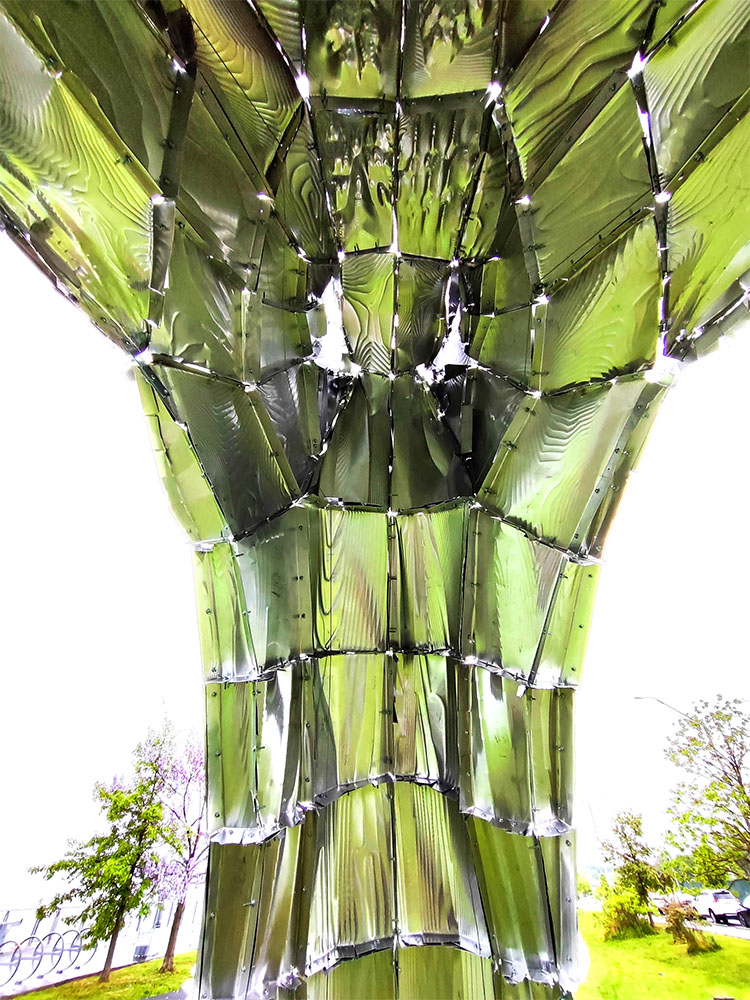 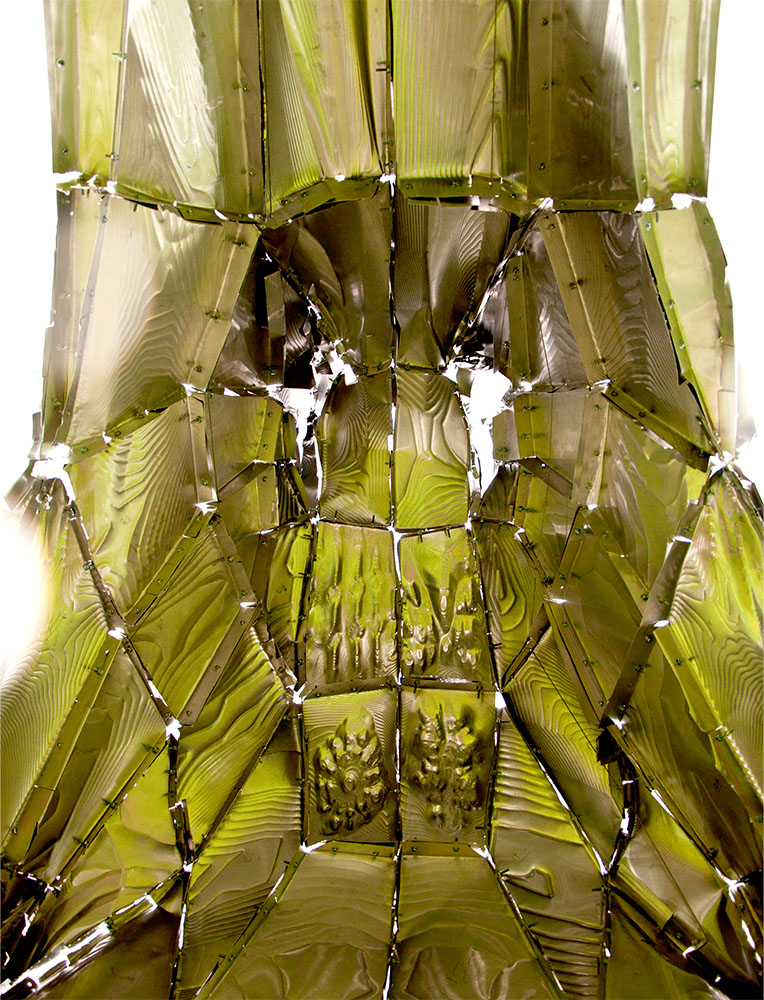
2D to 3D perspectival estimation
and prediction AI: original index signal LiDAR 3D scanning from Gaudi's Sagrada
Familia in Barcelona, AI DM 2D interpolation generative AI
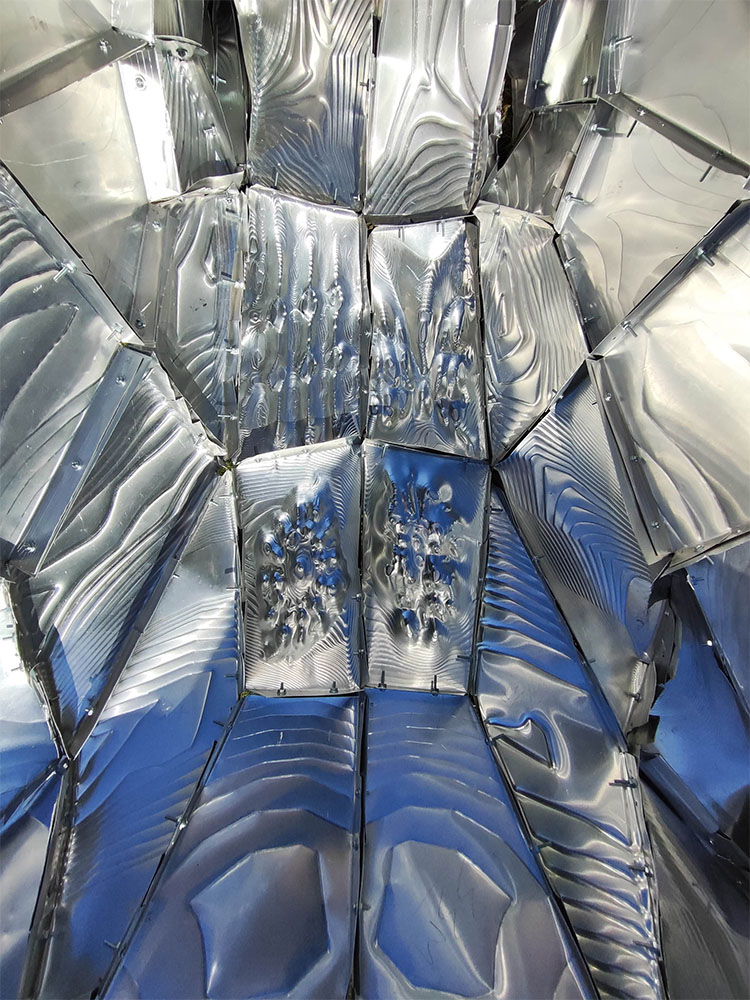 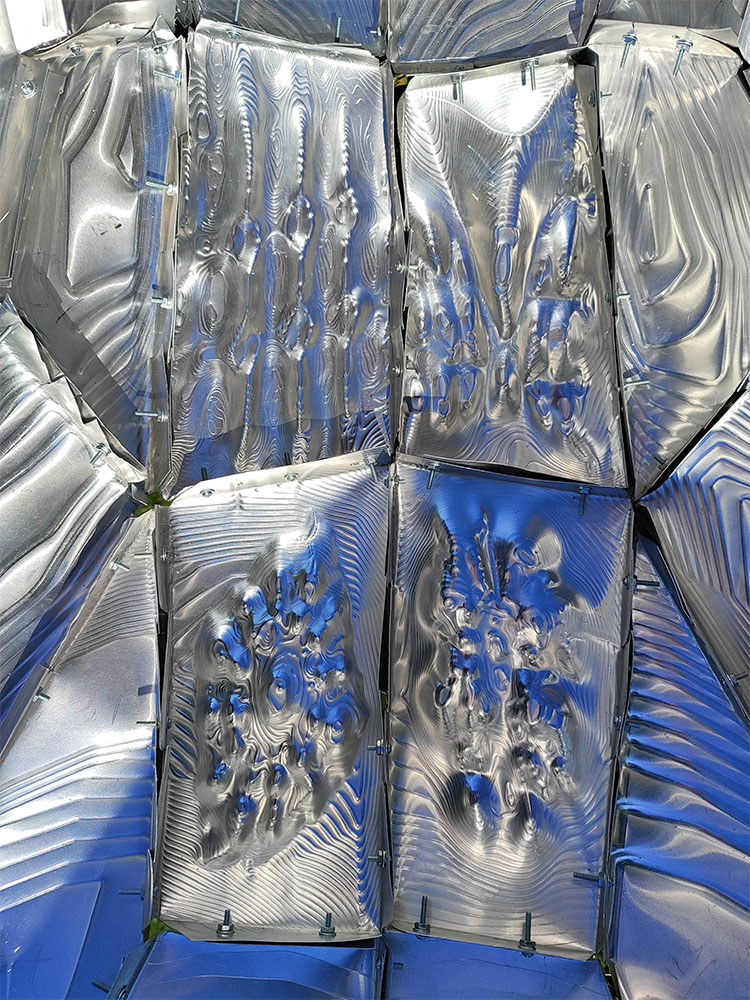 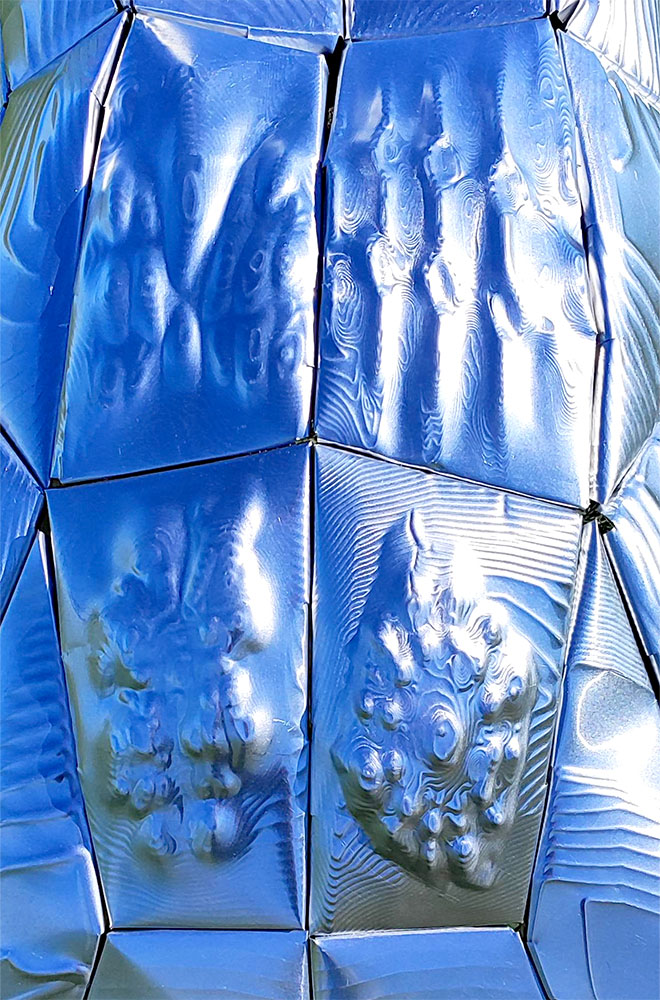
Metal forming physics data
deviating from simulation ideal model: Form finding site-based physical
computation signal processing against originating 3D ideal simulation model
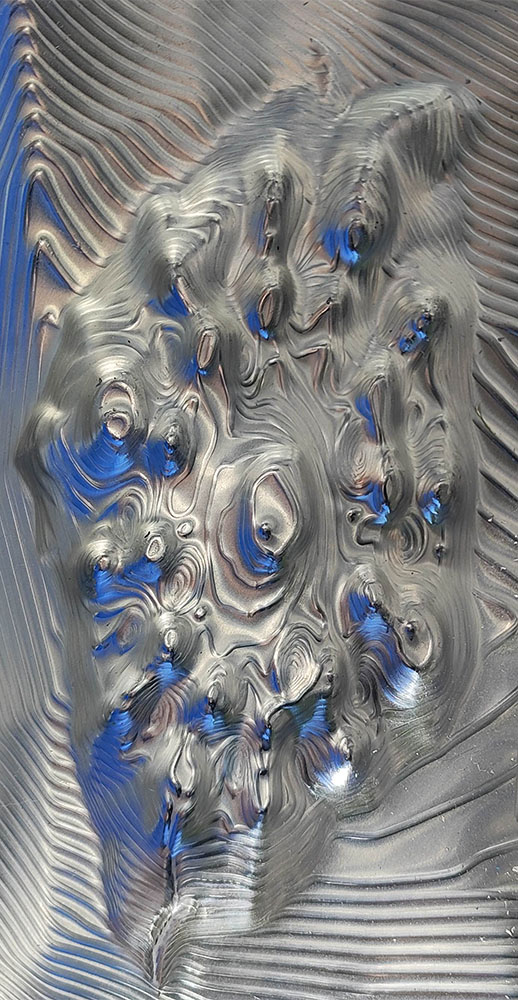 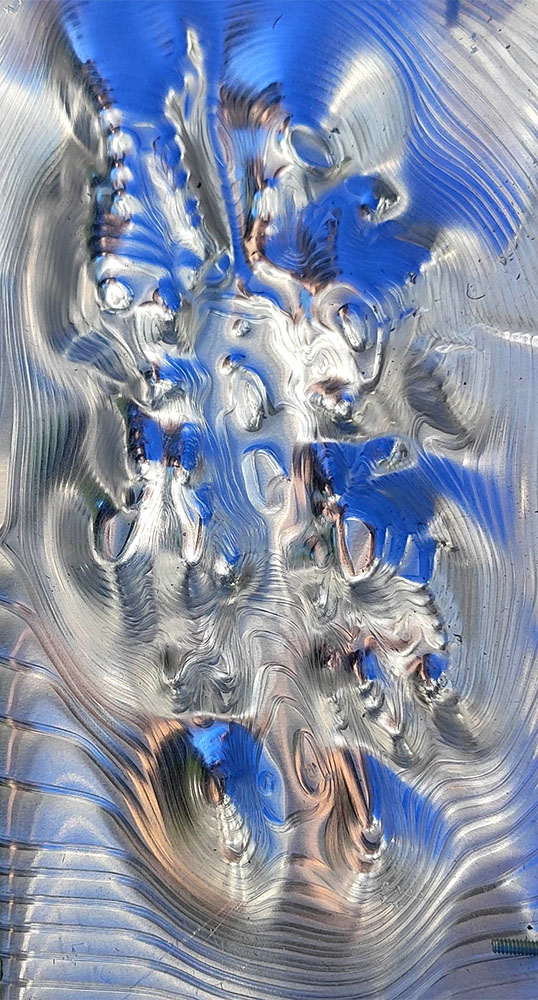 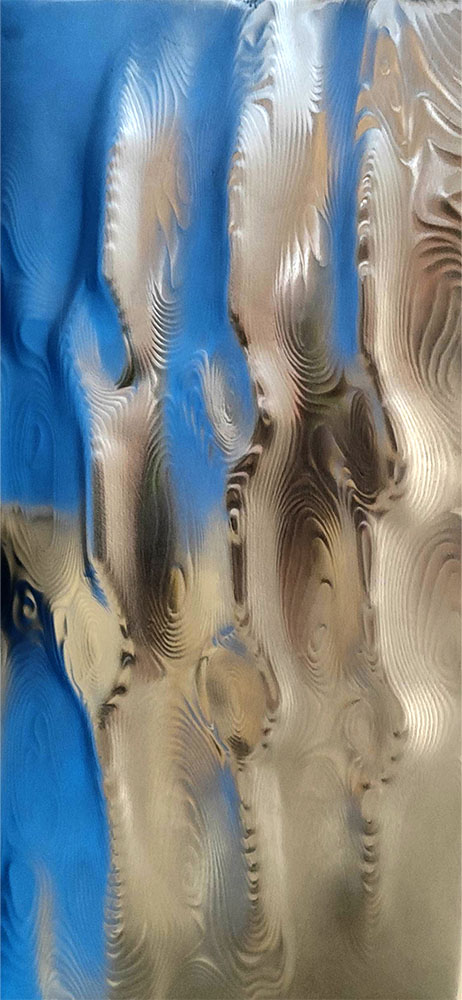
2022-02
Pablo Lorenzo-Eiroa's
Research on Artificial Intelligence activates
Generative AI discovering clues to activate emergent programming
through feature recognition and convolution in Diffusion Models. The
work of Gaudi is expanded in this repository searching for clues to
activate structural feature recognition and 2D pixel to pixel 3D
spatial simulation. Installation building for NYC, 2022. MJ, DM,
Pablo Lorenzo-Eiroa
Diffusion Models AI images retrieved via API
through MidJourney. We understand that MidJourney breaks
international copyright laws by retrieving copyrighted material. We
did as much as we could to work out images we know are of free
copyright in this case to expand the work of Gaudi through our own
images as prompts.
For more information and description of the
research and findings refer to the book
"Digital Signifiers in an Architecture of Information: From Big Data
and Simulation to Artificial Intelligence", Pablo Lorenzo-Eiroa,
Routledge, London 2023 and different media features of
the project:
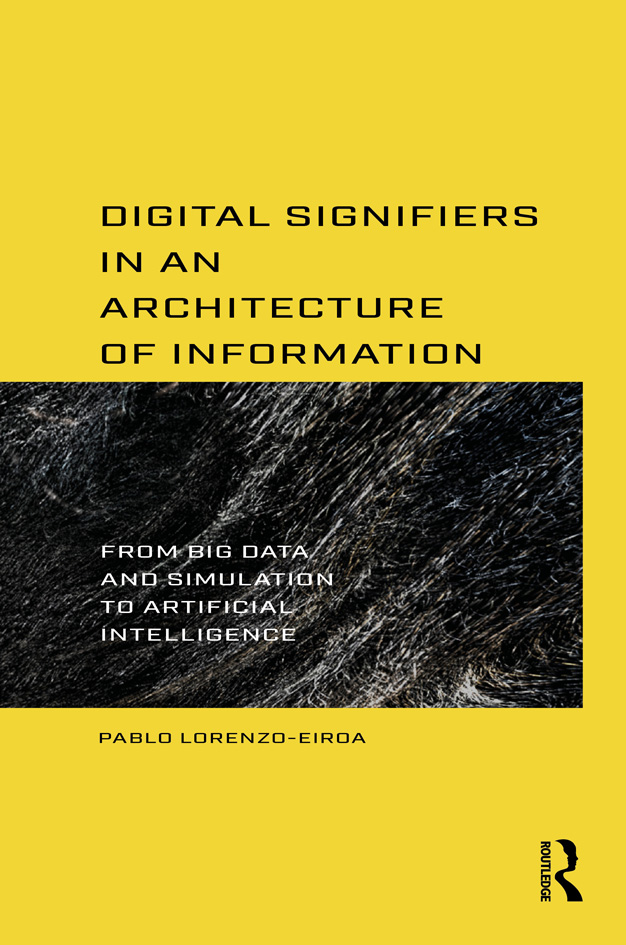
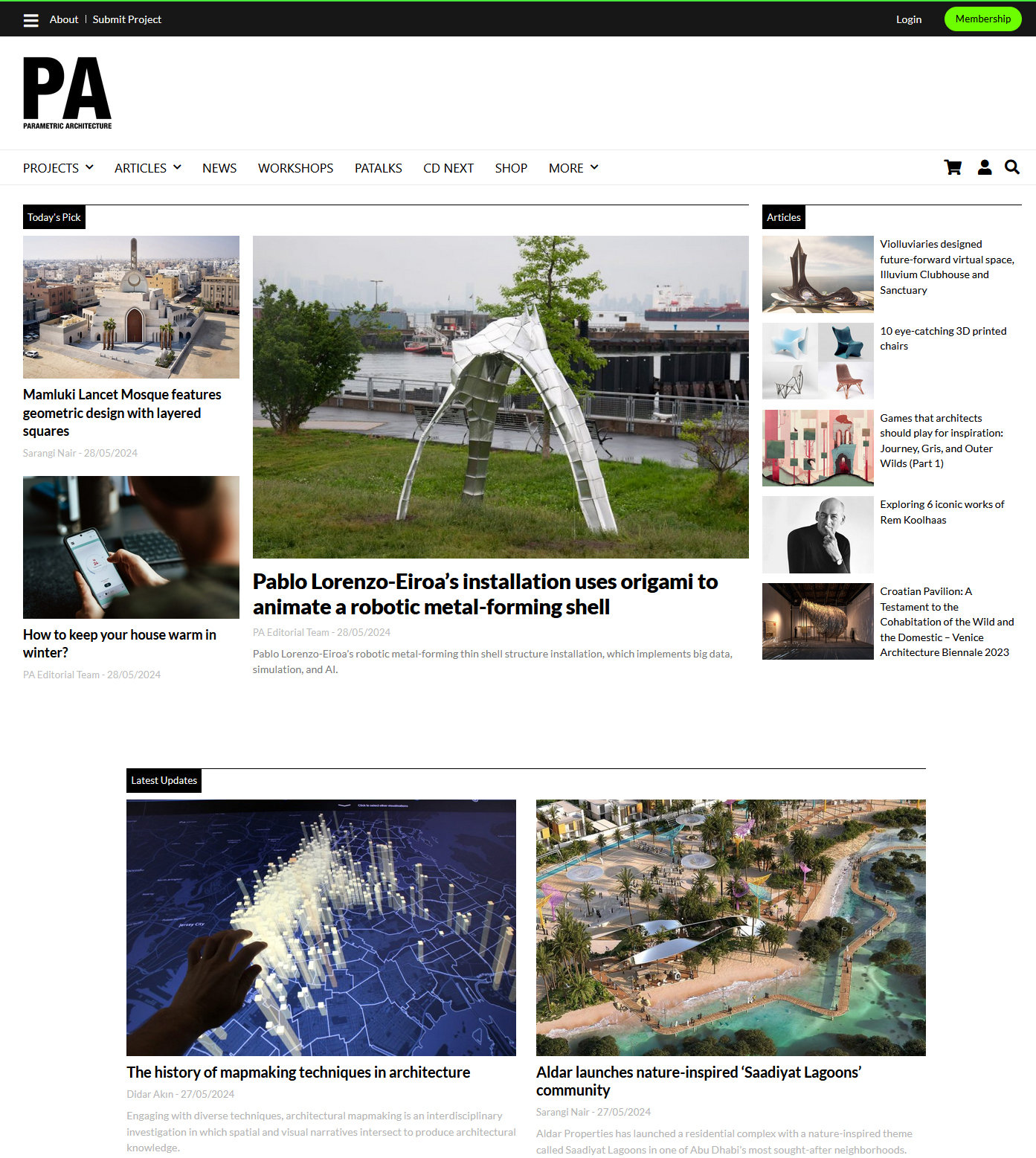
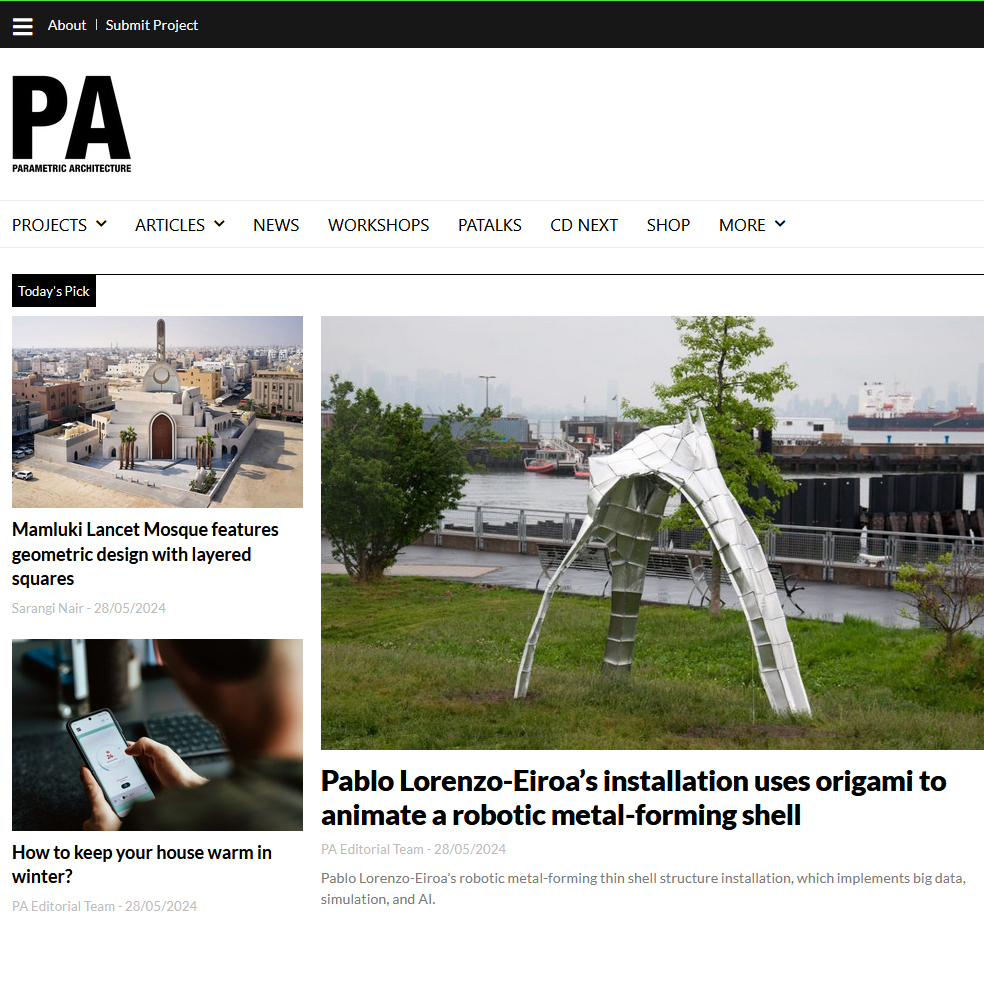
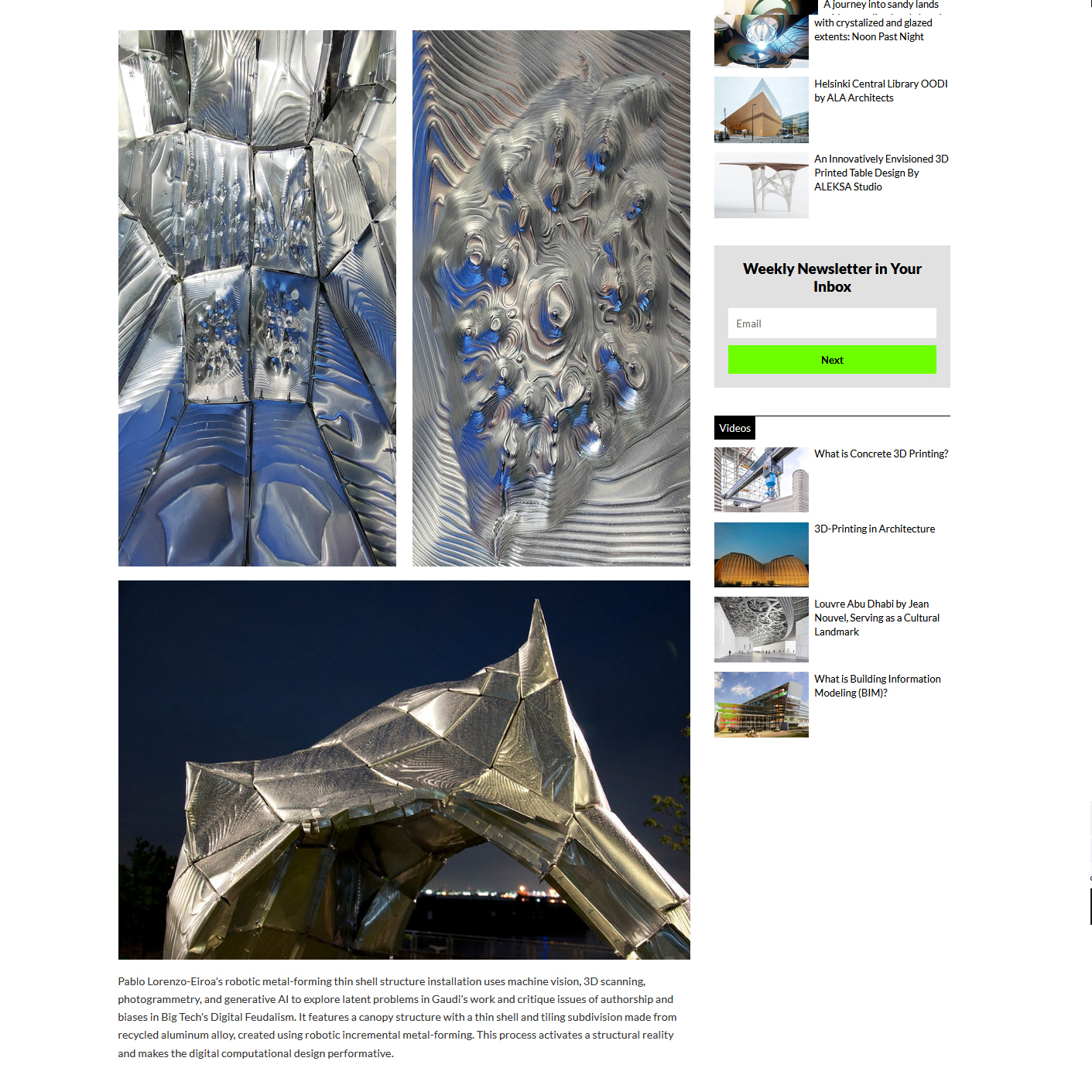
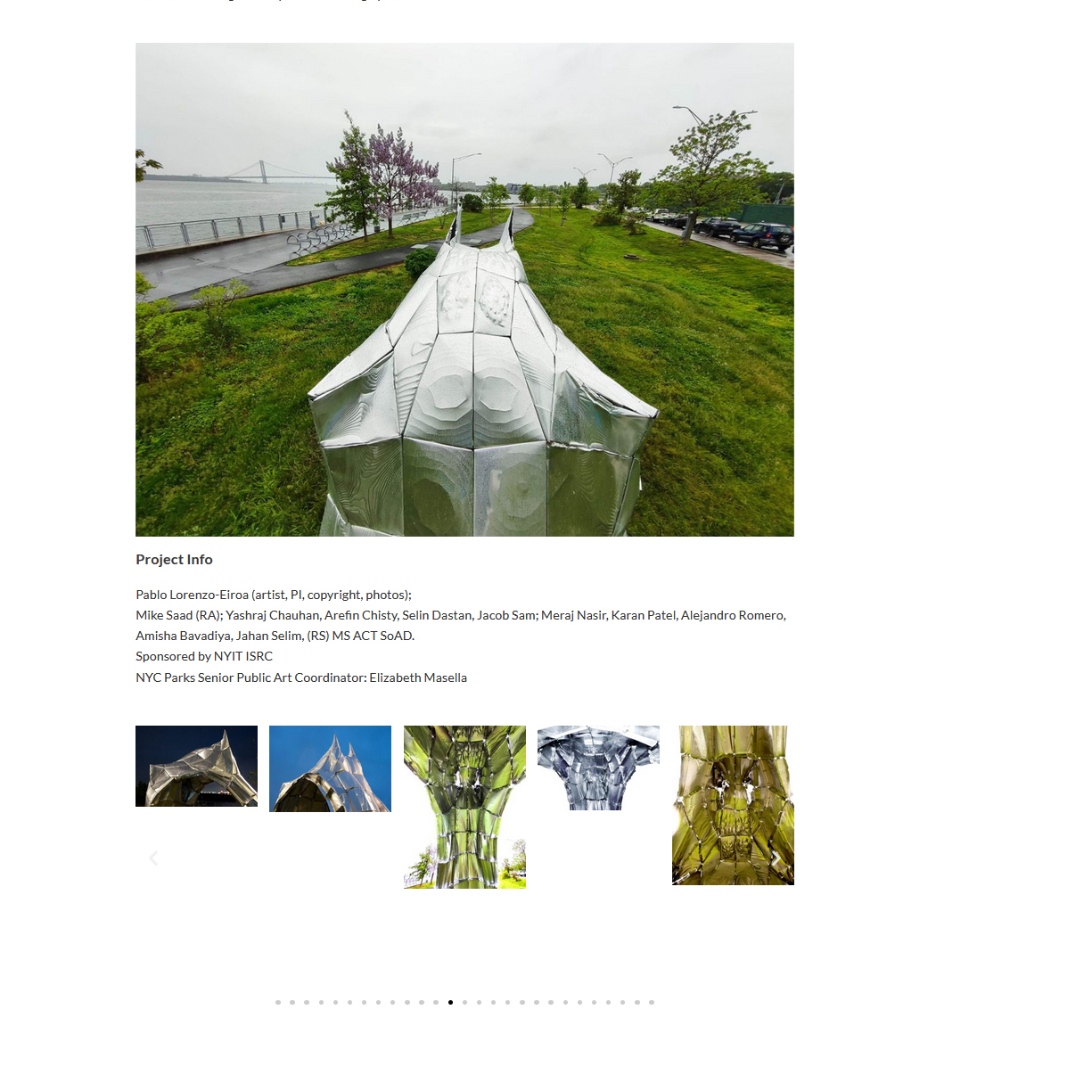
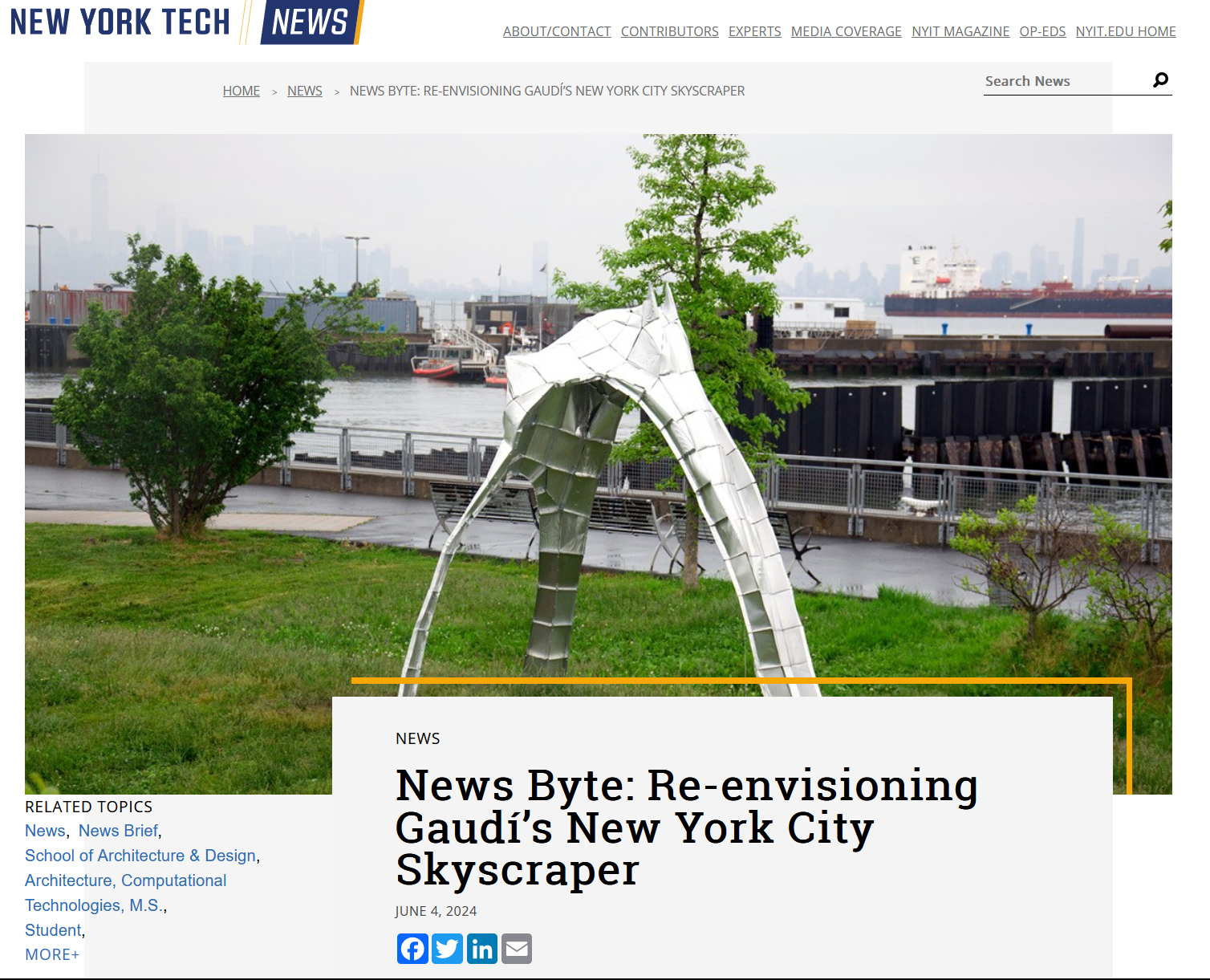  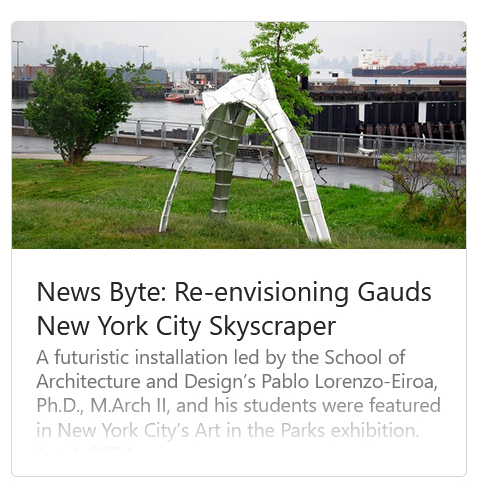
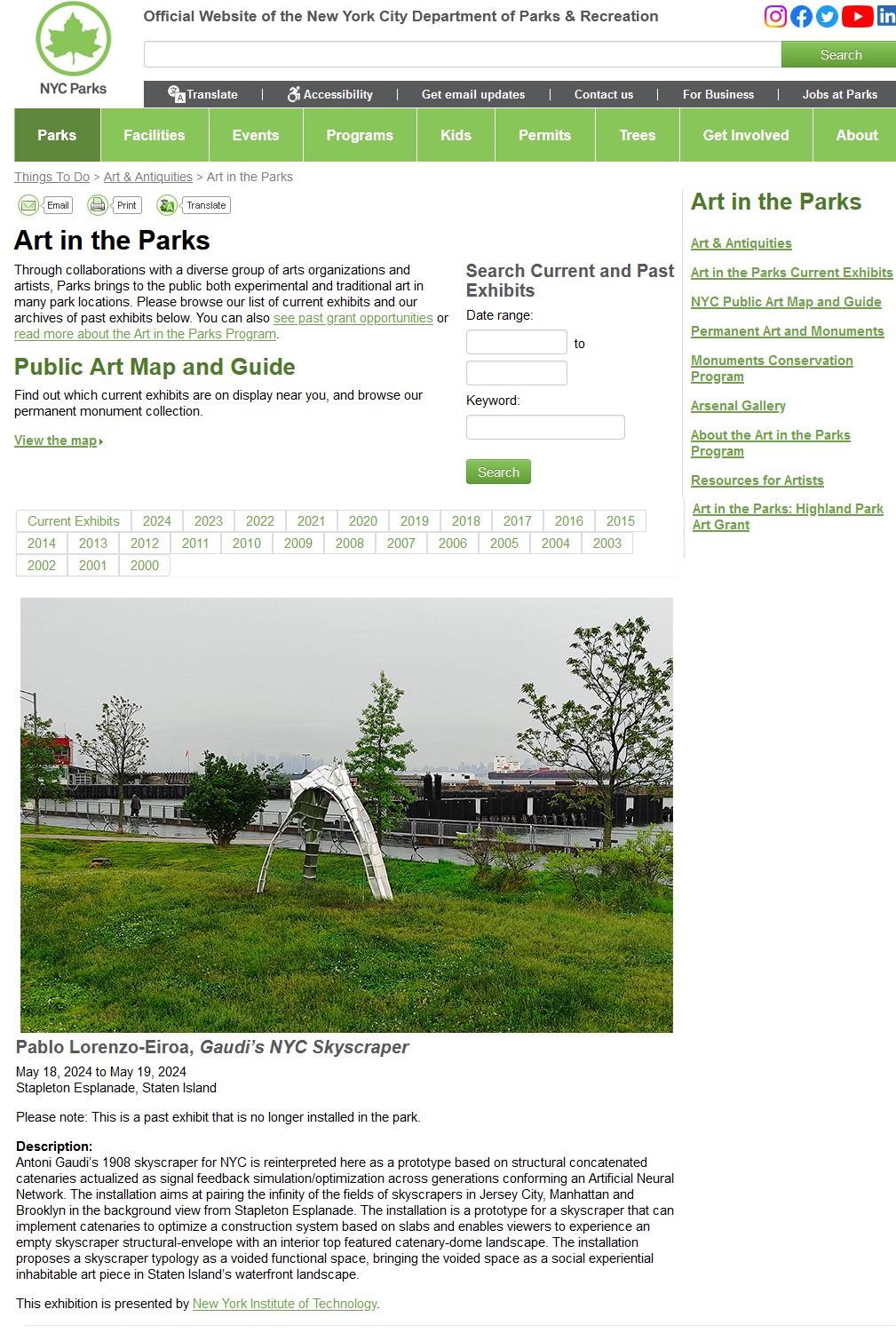
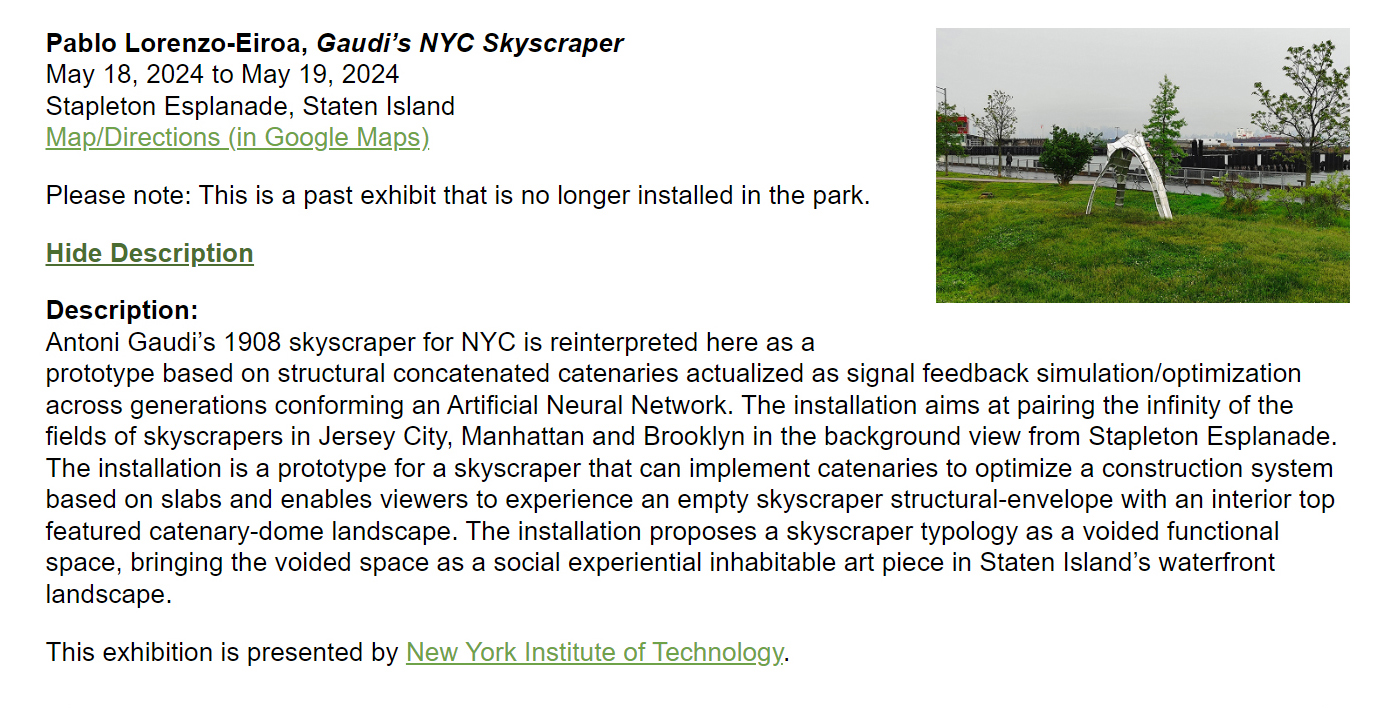
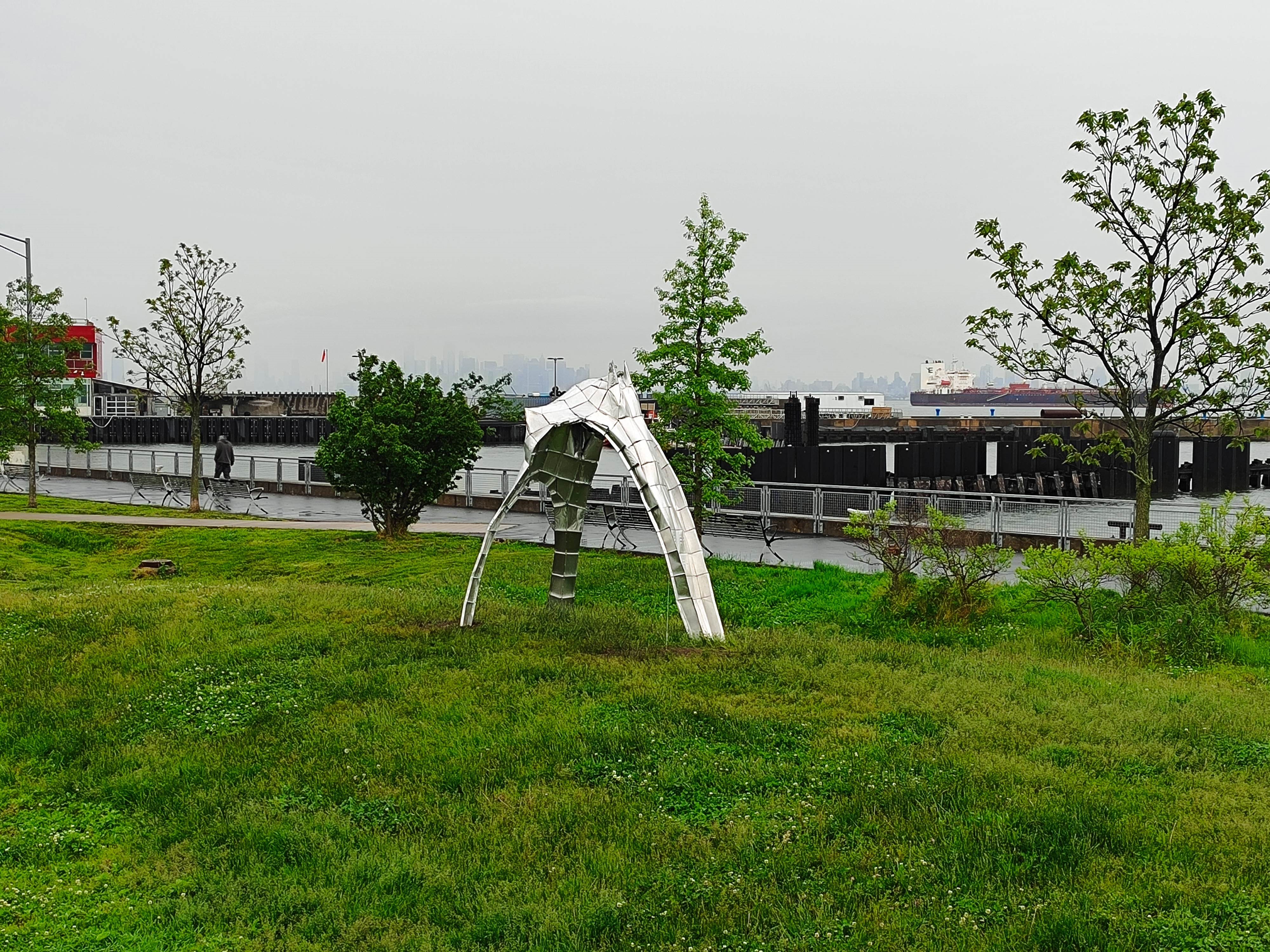
|